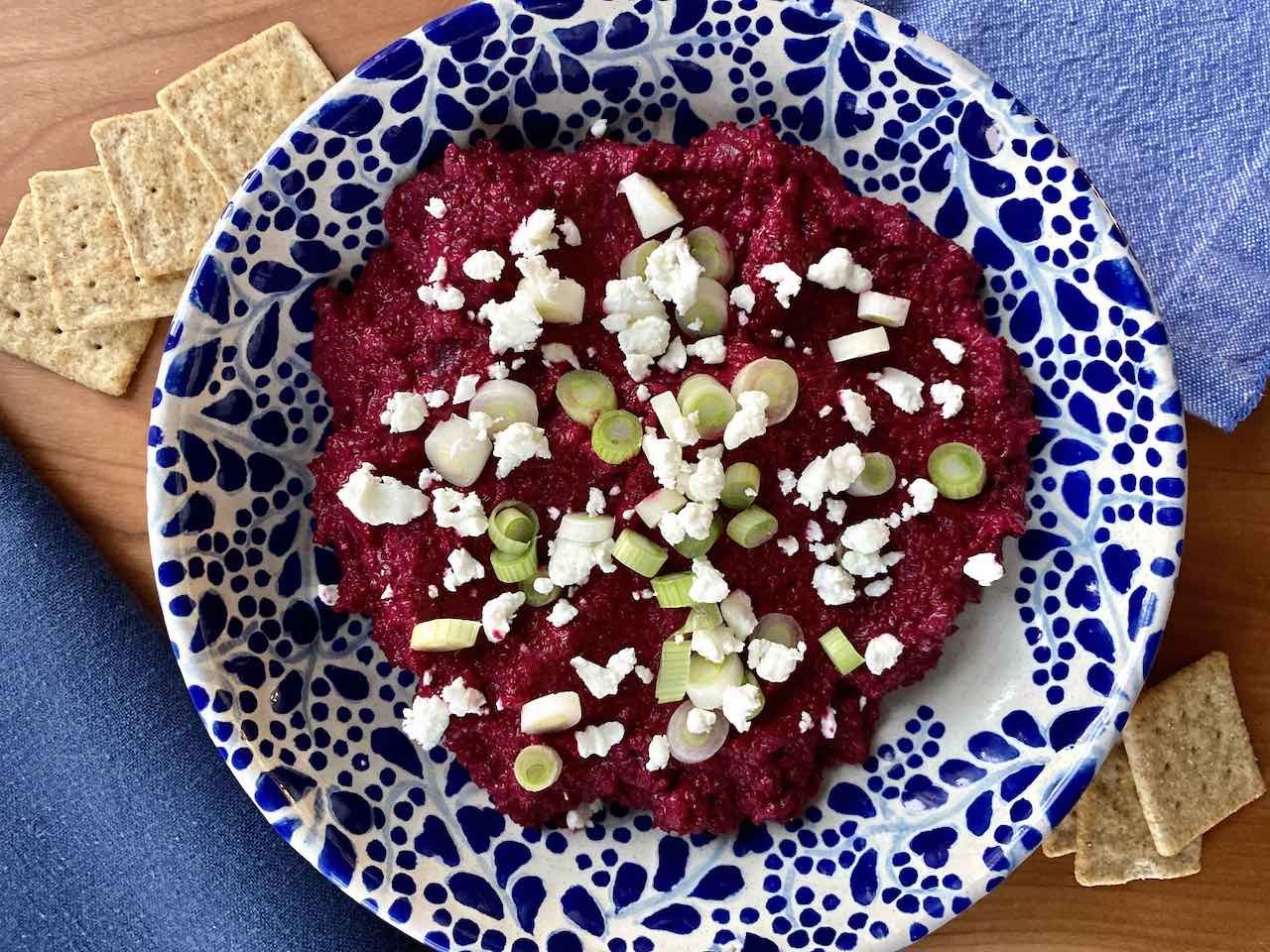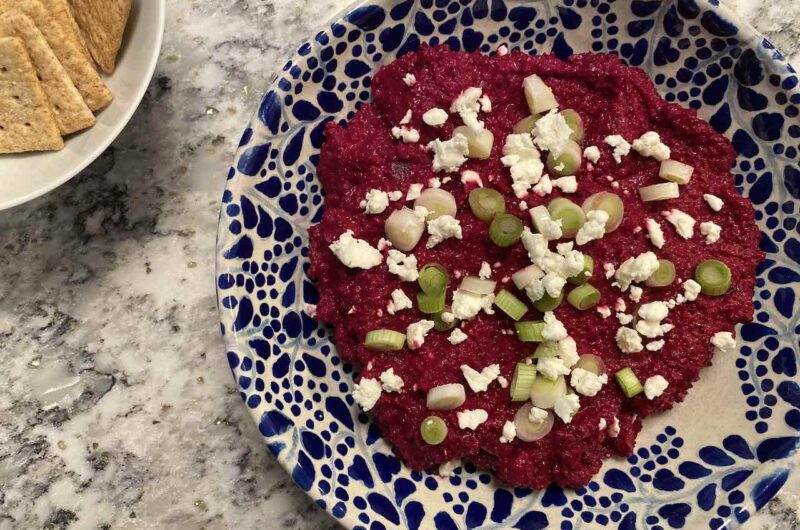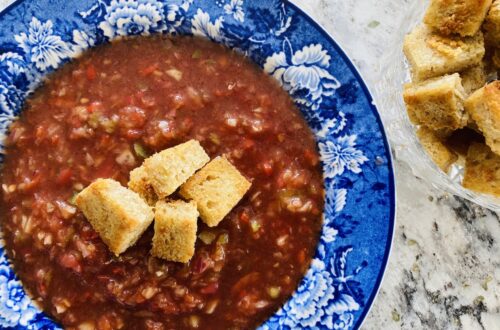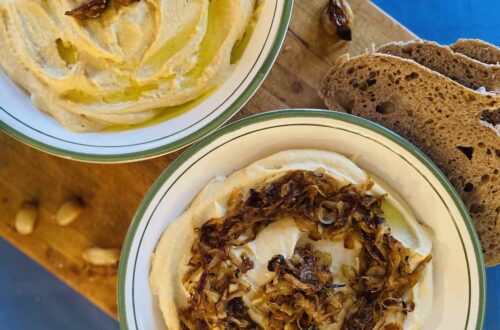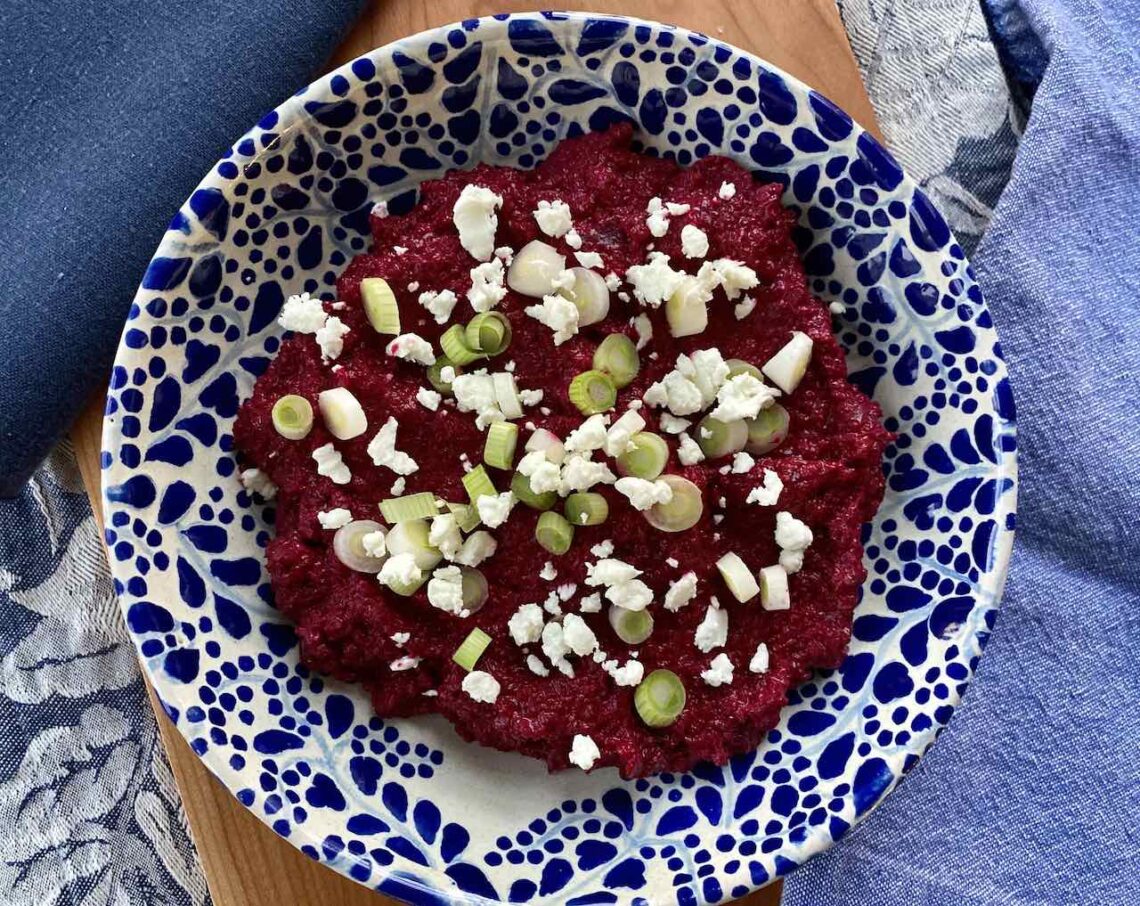
Puréed Beet Dip
There are some cookbooks that suck you in, instantly inspiring you to make every single recipe in the book. Jerusalem, by Yotam Ottolenghi and Sami Tamimi, is one of these. (I’m certainly not the first person to feel this way.) Recipes for butternut squash with tahini spread, chicken with caramelized onion and cardamom rice, and khachapuri called my name. But it was the recipe for puréed beets with yogurt and za’atar that really caught my eye. I love beets. I’ve always found pickled beets in a salad to be a delightful surprise, and roasted beets are sweeter and deeper. Since I found this recipe, I’ve made this dip at least five times. Every time it disappears within a day or two.
I know that beets can be a bit scary to cook with. Yes, they bleed and can get on everything (your shirt, the table, the chair, the counter, your sweater). And yes, roasting them takes a while. But really, you just throw the beets into a pot (preferably a Dutch oven, but any pot with a lid or aluminum foil will do), add some olive oil, and let them do their thing. You may want to turn them once or twice, but that’s it. (And if that still sounds too hard, just use canned beets.) The rest of the recipe is a breeze – add everything to a food processor and let it whirl!
Although beets are the main ingredient in this dip, I actually want to discuss a less central ingredient: maple syrup. Maple syrup comes from maple tree sap that has been boiled down. The sap is tapped from trees in the late winter, when the temperature gets below freezing at night but is warmer during the day, allowing the sap to run. It takes a lot of sap to make maple syrup: about 40 gallons of maple sap to make 1 gallon of maple syrup. The sap is boiled down so that it thickens as water evaporates, until it reaches 66-67 percent sugar content.
Maple syrup is produced from trees that grow in the red- and sugar-maple forests in the north-east corner of North America. While Quebec is the giant in the syrup industry, producing 72 percent of the world’s maple syrup, Vermont is the leading US producer, producing 47 percent of US maple syrup. Vermont’s output has grown significantly in recent years, from 500,000 gallons in 2004 to over 2 million gallons in 2018. (New York, which produces 20 percent of US maple syrup, is the second largest producer, followed by Maine.) Although Quebec is currently the largest producer, the US has the potential to outproduce it. While Vermont has already tapped almost all its tappable trees, New York has only tapped about 5 percent. If all of the maple trees in New York State were tapped, the US could overtake Canada in production. (New York has three times as many maple trees as Quebec’s maple farms.)
Since maple syrup production requires trees, there is an economic incentive to retain large swaths of forest. This is clearly a good thing for the environment and for slowing climate change – the more trees there are, the more carbon they can suck back into the soil. But climate change is also impacting maple tapping. Already, the change in weather has shifted the tapping season earlier in the year and has shortened the season. Moreover, warmer winters may mean that maple trees struggle to grow, and new trees will be unable to replace those that die. (So enjoy maple syrup while you can.)
While maple tapping in New England remains a sweet (no pun intended), small-town endeavor, in Canada it’s a much larger industry. In Quebec, syrup makers have created FPAQ (Fédération des producteurs acéricoles du Québec, or Federation of Quebec Maple Syrup Producers), which has been described as the OPEC for maple sugar makers. FPAQ buys, tastes, inspects, grades, stores, and sells maple syrup to ensure that the price remains stable over time, controlling supply. This brings a bit of stability to the industry, but it also has caused some friction (check out the Dirty Money episode, The Maple Syrup Heist, on Netflix).
This system was the reason for a stunningly massive maple syrup heist in 2012. Almost 540,000 gallons of syrup were stolen, an amount worth $13.4 million and accounting for 12.5 percent of the maple syrup reserve. The reserve in Quebec stores all maple syrup produced by bulk maple syrup producers in Quebec, as they must all sell to FPAQ. On a typical day, the reserve holds 7.5 million gallons of maple syrup, worth about $185 million, stored in white barrels stacked 20 feet high in the warehouse.
To carry out the heist, the thieves allegedly siphoned off the syrup from these barrels into old, battered barrels. They then filled the original barrels with water and left them in the warehouse, looking like they were still filled with maple syrup. The thieves then transferred their newly-filled barrels of maple syrup out of Quebec to other parts of Canada, where the market is not controlled. While it appears that the thieves were able to sell some of the syrup, three of them were eventually caught and found guilty.
As far as I can tell, there is no reason not to eat maple syrup (unless you don’t want to contribute to the Quebec cartel that controls most of the world’s syrup). To have maple syrup, we need large swaths of trees – a good reason not to cut down forests – and tapping these trees doesn’t seem to harm them. So go ahead and eat all the maple syrup you’d like! To read more about maple syrup, check out this article in Vanity Fair. And if you have an hour, watch the Dirty Money episode on Netflix, The Maple Syrup Heist.
Puréed Beet Dip
Course: Appetizer, Recipe, Snack6
servings1
hour15
minutesAdapted from Puréed Beets with Yogurt and Za’atar in Yotam Ottolenghi and Sami Tamimi’s cookbook, Jerusalem.
Ingredients
- Beet Dip
1 pound of beets, roasted (or half a pound of canned beets)
½ cup Greek yogurt
1 clove of garlic
½ small red chili (more or less to taste)
1 ½ tablespoons olive oil
1 ½ tablespoons maple syrup
1 ½ teaspoons za’atar
Salt
- To garnish
1 green onion, thinly sliced
1 ounce of soft goat cheese
Directions
- Preheat the oven to 400˚ F (200˚ C). Place the beets in a large pot, such as a Dutch oven and pour olive oil over them. Move the beets around in the pot to ensure they are fully coated in oil. Put the lid on the pot and roast the beets in the oven, cooking until soft (a knife should go through them easily), about one hour. Remove from the oven and let the beets cool. Remove the skin and cut into half or quarters if large.
- Add the beets, yogurt, garlic, chili, olive oil, maple syrup, and za’atar to the food processor and pulse for 20-30 seconds, until smooth. Add salt to taste (about ½ teaspoon).
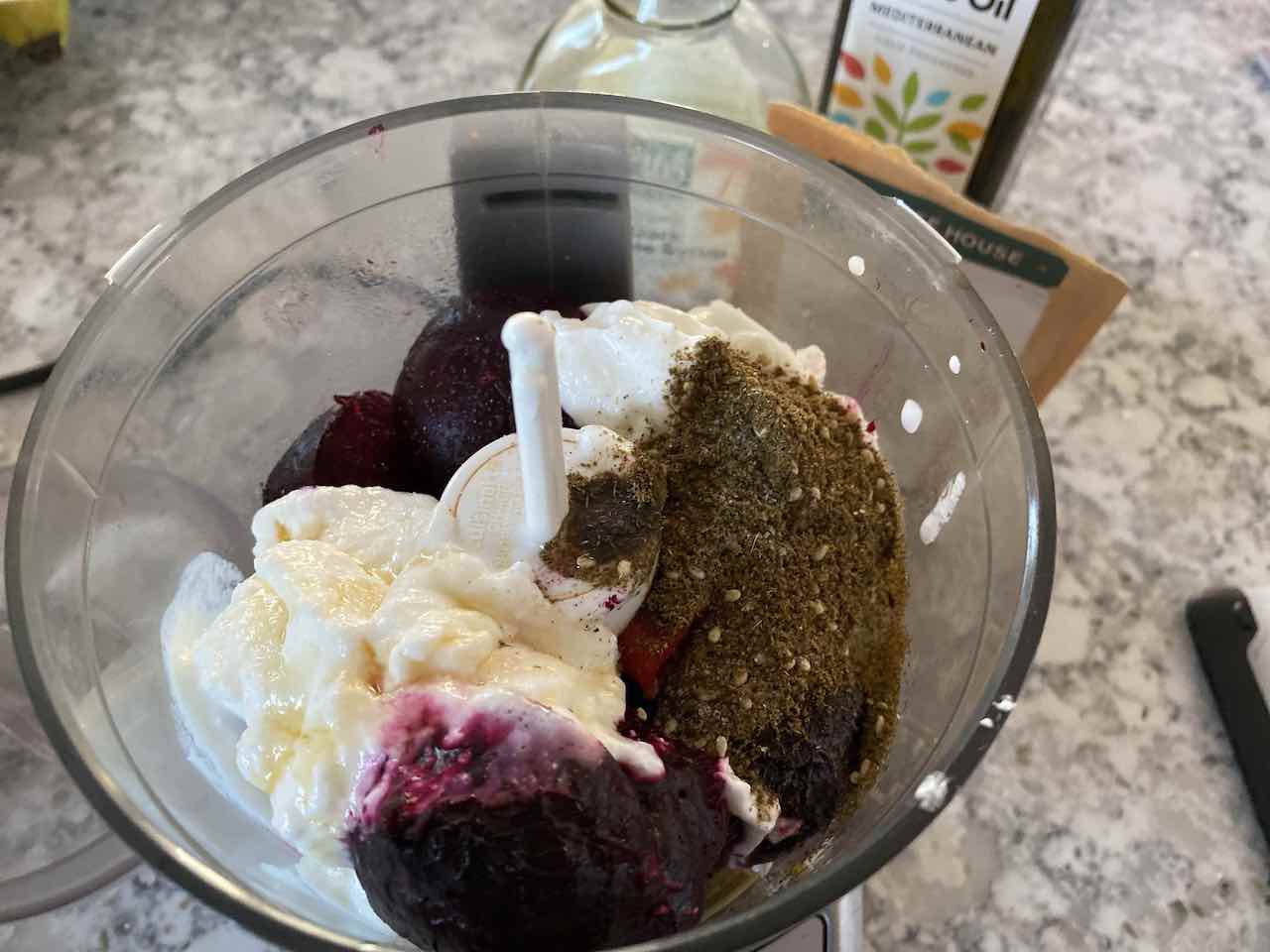
- Pour into a serving dish and top with green onions and goat cheese. Serve with crackers or pita bread, or enjoy on an open-faced sandwich.
